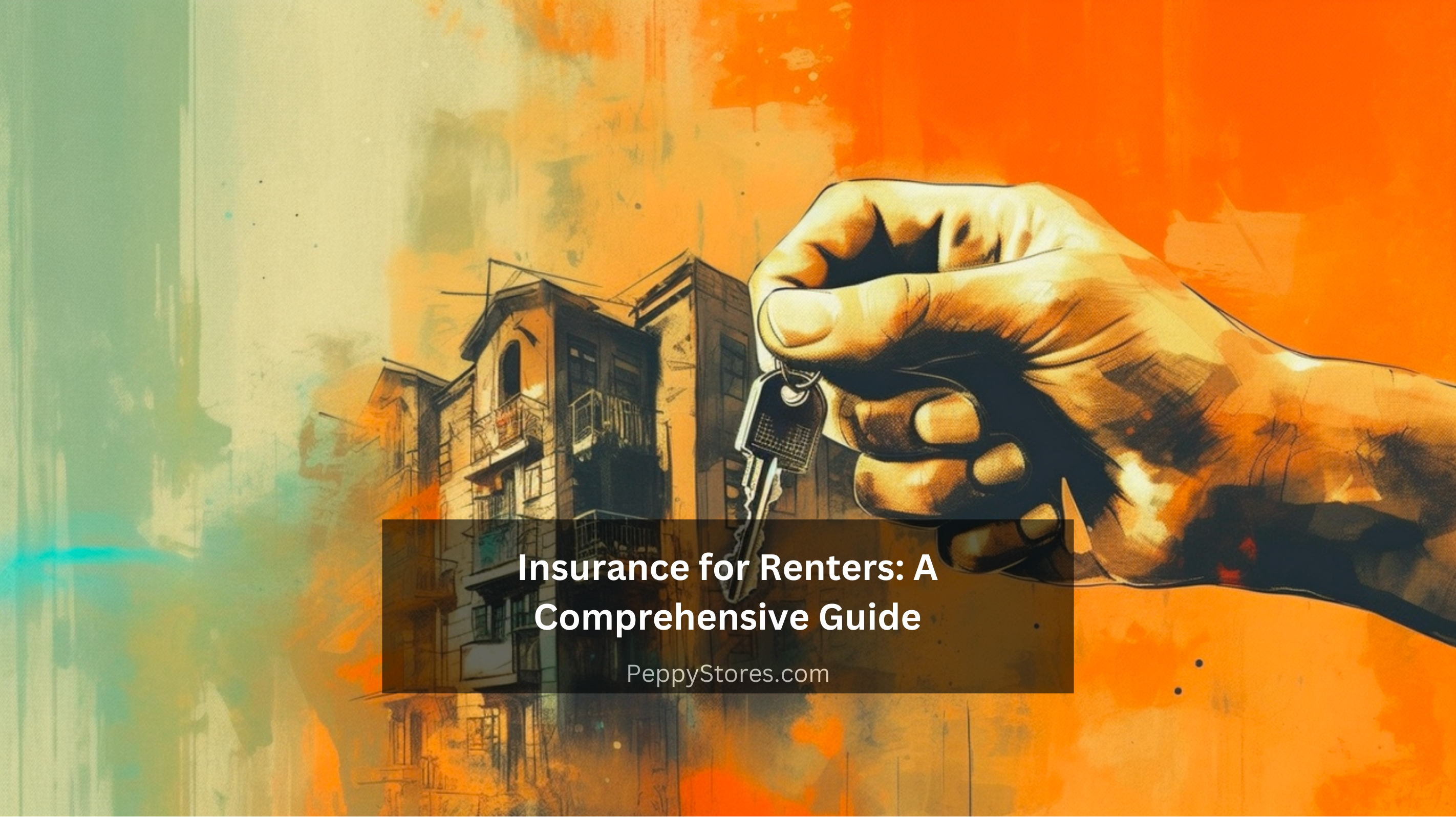Renting a home or apartment offers flexibility and convenience, but it’s essential to protect your personal belongings and liabilities. Many renters underestimate the importance of insurance, assuming that their landlord’s policy covers everything. However, this is a common misconception. In this comprehensive guide, we’ll explore the ins and outs of renters’ insurance, providing valuable insights and practical tips for individuals living in the USA.
Understanding Renters’ Insurance: The Basics
Renters’ insurance is a type of insurance policy designed to protect individuals who rent their homes or apartments. While landlords typically have insurance to cover the physical structure of the building, this coverage doesn’t extend to tenants’ personal belongings. Renters’ insurance fills this gap, offering financial protection for a variety of situations. Here are the key components of renters’ insurance:
Personal Property Coverage:
Coverage: Reimburses you for the loss or damage of personal belongings due to covered perils, such as fire, theft, vandalism, or certain natural disasters.
Importance: Protects your furniture, electronics, clothing, and other personal items from unexpected events.
Liability Coverage:
Coverage: Offers protection if you are found legally responsible for injuring someone or damaging their property. It covers legal expenses and the cost of damages up to the policy limit.
Importance: Guards against potential lawsuits and financial liabilities that may arise from accidents or incidents on the rented property.
Additional Living Expenses (ALE) Coverage:
Coverage: Pays for temporary living expenses if your rented home becomes uninhabitable due to a covered peril. This may include hotel stays, meals, and other necessary costs.
Importance: Assists with the financial burden of finding alternative accommodation during repairs or relocation.
Why Renters’ Insurance is Crucial:
Protection for Personal Belongings:
Renters’ insurance ensures that your personal items are covered in the event of theft, fire, or other covered perils. This coverage is crucial for replacing or repairing belongings that may be expensive to replace out of pocket.
Liability Coverage:
If someone is injured on your rented property and holds you responsible, liability coverage can help cover medical expenses and legal fees. Without this coverage, you could be personally liable for significant costs.
Financial Safety Net:
Renters’ insurance acts as a financial safety net, providing peace of mind knowing that you have protection against unexpected events. It’s a relatively affordable way to mitigate financial risks associated with rental living.
Landlord Requirements:
Some landlords may require tenants to have renters’ insurance as a condition of the lease. Even if it’s not mandatory, having this coverage is a responsible choice to protect yourself and your possessions.
Coverage Away from Home:
Renters’ insurance doesn’t just cover your belongings within the rented property. It also provides coverage for your personal items when you take them outside the home, such as when traveling or in your car.
Types of Coverage and What Renters’ Insurance Typically Includes:
Named Perils vs. All Risk (Open Perils):
Named Perils: This type of policy explicitly lists the perils or risks that are covered. Common named perils include fire, theft, vandalism, and certain natural disasters.
All Risk (Open Perils): This broader coverage protects against all perils except those specifically excluded in the policy. While more comprehensive, it may come with a higher premium.
Replacement Cost vs. Actual Cash Value:
Replacement Cost: This coverage reimburses you for the cost of replacing your lost or damaged items with new ones, without accounting for depreciation.
Actual Cash Value (ACV): ACV factors in depreciation, meaning you receive the current market value of your items at the time of the loss.
Additional Coverage for High-Value Items:
Some renters’ insurance policies have limits on certain high-value items such as jewelry, electronics, or collectibles. Consider adding additional coverage (an endorsement or rider) for these items.
Loss of Use Coverage:
This coverage helps with additional living expenses if you are temporarily displaced from your rental due to a covered peril. It can include costs like hotel stays, meals, and transportation.
Medical Payments to Others:
Provides coverage for medical expenses if a guest is injured on your property, regardless of fault. It may help avoid a lawsuit by covering minor injuries without the need for legal action.
How to Choose the Right Renters’ Insurance:
Assess Your Coverage Needs:
Take inventory of your belongings and estimate their value. Consider the potential risks in your area, such as natural disasters or high crime rates, and choose coverage that aligns with your needs.
Understand Policy Limits:
Be aware of the coverage limits for personal property and liability in your policy. If you have high-value items, consider increasing coverage or getting separate policies for those items.
Determine the Type of Coverage You Need:
Decide whether you prefer named perils or all-risk coverage. Consider whether replacement cost or actual cash value is more suitable for your circumstances.
Shop Around for Quotes:
Get quotes from multiple insurance providers to compare coverage options and premiums. Consider factors such as customer service, reputation, and online reviews in addition to the cost.
Bundle Insurance Policies:
If you have other insurance needs, such as auto insurance, consider bundling policies with the same provider. Many insurers offer discounts for multiple policies.
Check for Discounts:
Inquire about discounts that may be available to you. Common discounts include those for safety features in your rental unit, security systems, or being claims-free.
Review and Update Annually:
Regularly review your renters’ insurance policy, especially when there are changes in your living situation or the value of your possessions. Update coverage as needed to ensure it remains relevant.
Common Myths About Renters’ Insurance:
Myth: Landlord’s Insurance Covers Tenants’ Belongings.
Fact: A landlord’s insurance policy typically covers the structure of the building, not the tenant’s personal belongings. Renters’ insurance is necessary for this purpose.
Myth: Renters’ Insurance is Expensive.
Fact: Renters’ insurance is generally affordable, with premiums often costing less than a daily cup of coffee. The value of coverage far outweighs the cost.
Myth: Renters’ Insurance Only Covers Personal Property.
Fact: While personal property coverage is a significant component, renters’ insurance also includes liability coverage and coverage for additional living expenses.
Myth: Renters’ Insurance is Only for Valuable Items.
Fact: Renters’ insurance is designed to protect a wide range of personal belongings, not just high-value items. It covers furniture, clothing, electronics, and more.
Myth: Renters’ Insurance is Only Necessary for Those with Expensive Items.
Fact: Renters’ insurance is valuable for everyone renting a home or apartment, regardless of the value of their possessions. It provides essential coverage for unexpected events.
Conclusion: Safeguarding Your Rental Experience
Renters’ insurance is an often-overlooked yet essential aspect of living in a rented home or apartment. It offers financial protection for your personal belongings, liabilities, and unexpected events that can disrupt your living situation. By understanding the coverage options, assessing your needs, and choosing the right policy, you can enjoy peace of mind knowing that you are safeguarded against the uncertainties of rental living. Whether you’re a first-time renter or considering updating your existing coverage, prioritize renters’ insurance as a responsible and valuable investment in your well-being and security.




